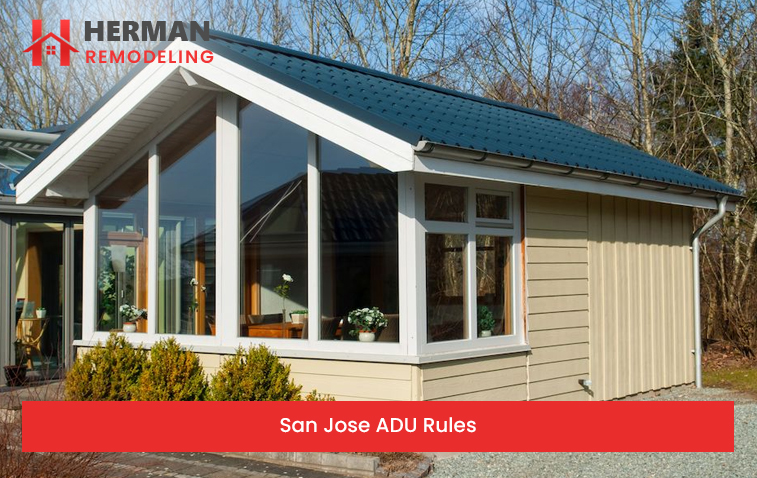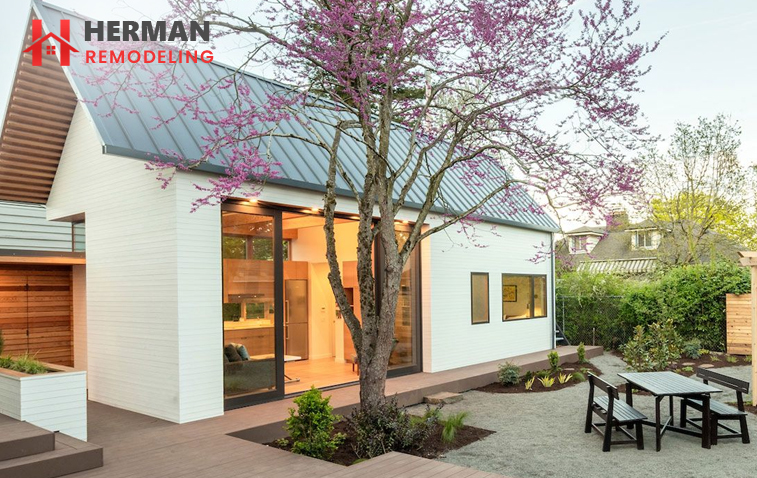San Jose, California, is one of the cities leading the way in addressing the affordable housing crisis through Accessory Dwelling Units (ADUs). In 2017, San Jose implemented new ADU rules to help increase the availability of affordable housing and promote sustainable growth within the city. These changes have made it easier for residents to build ADUs on their property, creating more housing options for renters and homeowners.
Understanding the city’s regulations and requirements is crucial for a successful project. In this comprehensive guide, we cover everything you need to know about ADUs in San Jose, including size and setback restrictions, parking requirements, design guidelines, permitting process and fees, and Junior Accessory Dwelling Units (JADUs).
In this comprehensive guide, we will break down the key components of San Jose’s ADU rules and provide resources for navigating the process of building an ADU in the city. Let’s

Building an ADU in San Jose comes with numerous benefits. For starters, it presents an opportunity for increased rental income. Given the high demand for affordable housing in the city, homeowners can rent out their ADUs to generate a consistent income stream. This helps in offsetting mortgage costs and other expenses.
Moreover, building an ADU addresses the housing shortage in San Jose. The city is currently grappling with a significant lack of affordable housing options – a situation exacerbated by soaring property prices. By encouraging homeowners to build ADUs, the city can increase its housing stock without needing large-scale developments, thus providing affordable housing to more residents.
Another benefit of ADUs is the potential for multi-generational living. ADUs offer an excellent solution for families that wish to live close together while still maintaining a level of privacy. Elderly parents, for instance, can live in the ADU while their adult children and grandchildren live in the main house. This allows families to support one another while preserving independence and personal space.
If you’re considering building an ADU in San Jose, Herman Remodeling is a name you can trust. With years of experience in the construction industry, we specialize in ADU construction, bringing a deep understanding of San Jose’s ADU rules and regulations to every project.
San Jose recognizes two types of ADUs: attached and detached. Attached ADUs are constructed as an addition to an existing main house, while detached ADUs are separate structures built on the same lot. Each type of ADU comes with its own set of rules and regulations, which are further influenced by factors such as lot size, location, and existing structures.
The maximum size of an ADU in San Jose depends on the type of ADU and the size of the lot. The following table shows the full sizes of each ADU:
| ADU Type | Maximum size | |
| Attached ADU | Up to 800 square feet or 50% of the primary residence area, but at most 1,200 square feet. | These units are physically connected to the primary residence. |
| Detached ADU | 1,200 square feet. | These units are separate from the primary residence. |
| JADU | 500 square feet | These units are smaller than 500 square feet and are located within the footprint of the primary home. |
| THOW | 400 square feet | These units are allowed only on single-family properties and have different requirements and a more straightforward, lower-cost permit process. |
The maximum height of an ADU in San Jose is generally 16 feet. However, there are some exceptions, such as for ADUs on lots with a slope greater than 20%.
When building accessory dwelling units (ADUs), it is essential to adhere to specific requirements. Precisely, setback regulations must be followed to ensure safety and compliance.
For example, attached ADUs must be set back at least 4 feet from the side and rear property lines. Similarly, detached ADUs must be set back at least 4 feet from the side and rear property lines, as well as 5 feet from the front property line. Additionally, JADUs must be set back an appropriate distance to ensure fire safety.
Many other factors can affect the requirements for an ADU, such as the zoning of the property and the specific location of the ADU on the lot. It is essential to consult with the City of San Jose’s Planning Department to get particular information about the requirements for an ADU on your property.
Accessory Dwelling Units (ADUs) need to blend in seamlessly with the main dwelling and the local community. While there are no design guidelines for ADUs, the city provides some general suggestions, such as utilizing identical materials and color schemes as the primary dwelling. Ensuring visual compatibility is crucial in maintaining the overall aesthetic of the neighborhood.
To build an Accessory Dwelling Unit (ADU) in San Jose, you must obtain a permit from the City of San Jose. The permitting process typically takes 6-8 weeks, and the permit fee is based on the size and type of ADU you are building.
The first step in the permitting process is to submit a permit application to the City of San Jose. You can download the permit application form from the City website. The plan review process typically takes 2-3 weeks. During the plan review, the City will ensure that your ADU complies with all applicable zoning and building codes. You must pay the permit fee before beginning construction on your ADU.
The permit fee for an ADU in San Jose is based on the size and type of ADU you are building. The following table shows the permit fees for different types of ADUs:
| Type of ADU | Permit Fee |
| Detached ADU | $1,200 |
| Attached ADU | $600 |
| Junior Accessory Dwelling Unit (JADU) | $300 |
In addition to the permit fee, you may also need to pay other costs, such as school impact fees and parkland impact fees. The amount of these fees will vary depending on the size and location of your ADU.
In addition to ADUs, San Jose allows the construction of Junior Accessory Dwelling Units (JADUs). JADUs are smaller than ADUs, with a maximum size of 500 square feet. JADUs can be located within the footprint of an existing single-family home, such as a converted garage.
The permitting process for JADUs is more straightforward than for ADUs. You can obtain a JADU permit online, and the permit fee is significantly lower.
For more information on San Jose’s ADU and JADU regulations, please visit the city’s website.

Designing and constructing an ADU in San Jose involves several considerations to ensure a successful project. Firstly, it is essential to create a San Jose ADU design that is both functional and aesthetically pleasing. This includes choosing a layout that maximizes the use of space, selecting materials that are durable and easy to maintain, and adopting a design style that complements the main dwelling.
Additionally, the construction process should adhere to the city’s building codes and the ADU rules. This covers aspects like ensuring proper installation of utilities, meeting energy efficiency standards, and providing adequate access and safety features.
It is highly recommended to engage a professional and experienced service like Herman Remodeling, well-versed in San Jose’s ADU regulations, to ensure a smooth and compliant construction process.
Financing an ADU can be a significant undertaking, but various options are available to homeowners. Traditional home equity loans or home equity lines of credit (HELOCs) can be viable options, leveraging the equity in your existing property to fund your ADU project. Alternatively, cash-out refinancing allows homeowners to refinance their mortgage for more than they owe on their home and use the difference to pay for the ADU.
Personal and construction loans can also be considered, although these often come with higher interest rates. Some cities, including San Jose, offer specific loan programs to encourage ADU construction, aiming to alleviate the housing shortage. Consider consulting with a financial advisor or a professional like Herman Remodeling to understand better what financing option fits your situation best.
For consultation on your ADU project, contact us today and take the first step towards getting started.
Building an ADU in San Jose can be a beneficial and rewarding opportunity for homeowners. By following the city’s regulations and obtaining the necessary permits, you can contribute to the effort of providing affordable housing options while also increasing your property value. It is essential to work with experienced professionals like Herman Remodeling to ensure compliance with all regulations and codes, as well.